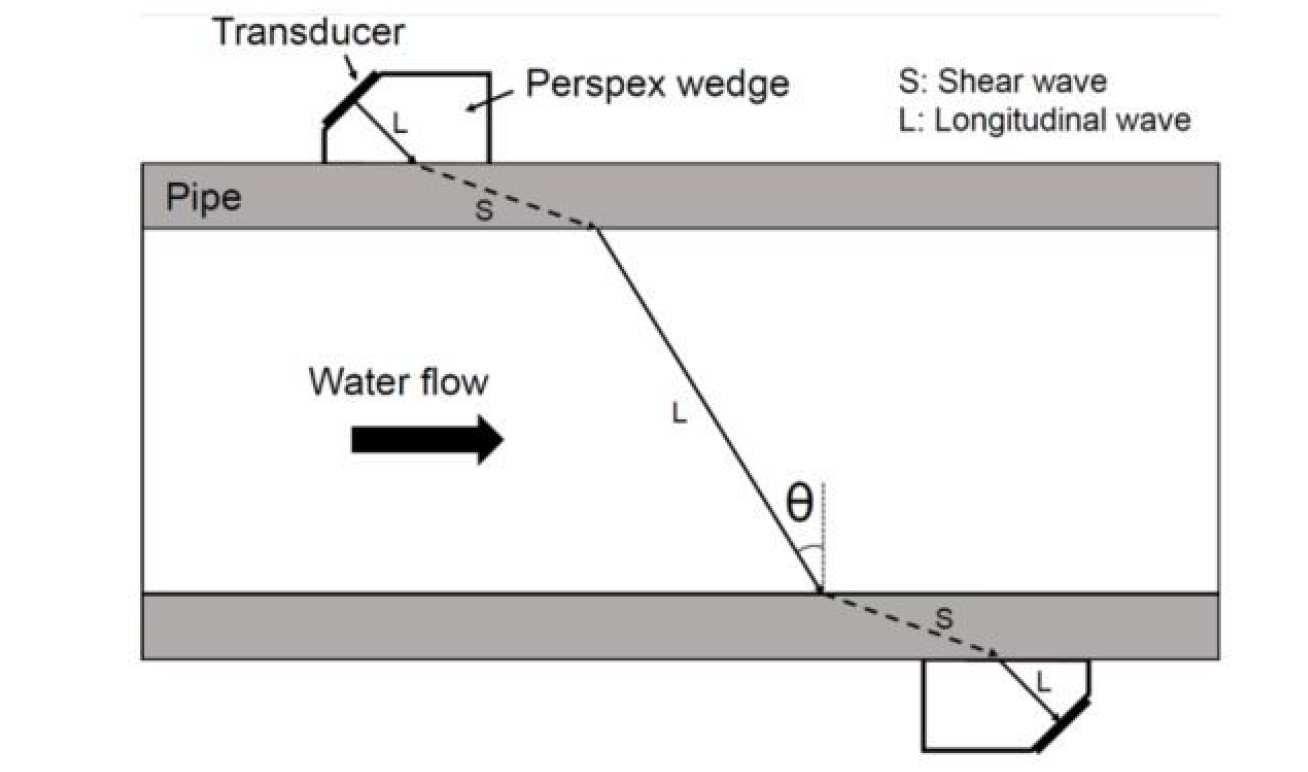Improved Ultrasonic Flow Meter
An ultrasonic flow meter measures the flow rate by transmitting and receiving ultrasound. There are two main principles: the transit-time method and the Doppler method. The transit-time method (Figure 1), which is most widely used, measures the difference in travel time between ultrasound sent upstream and downstream. The Doppler method, meanwhile, measures the flow velocity of fluids containing slurries, by measuring the difference in frequency of incident signals and reflected signals from the solids in the fluid. These two ultrasonic methods provide a solution for flow monitoring where non-invasiveness and easy deployment is required. Despite the fast development of the ultrasonic flow meter, the current ultrasonic flow meters suffer from accuracy problems, which are mostly caused by uncertainties, such as pipe geometry, transducer alignment and pipe roughness. Therefore, to improve the performance of an ultrasonic flow meter, these uncertainties need to be studied and reduced. The aim of this project is to improve the overall accuracy of flow measurement by combining flow meter and NDE technology.



